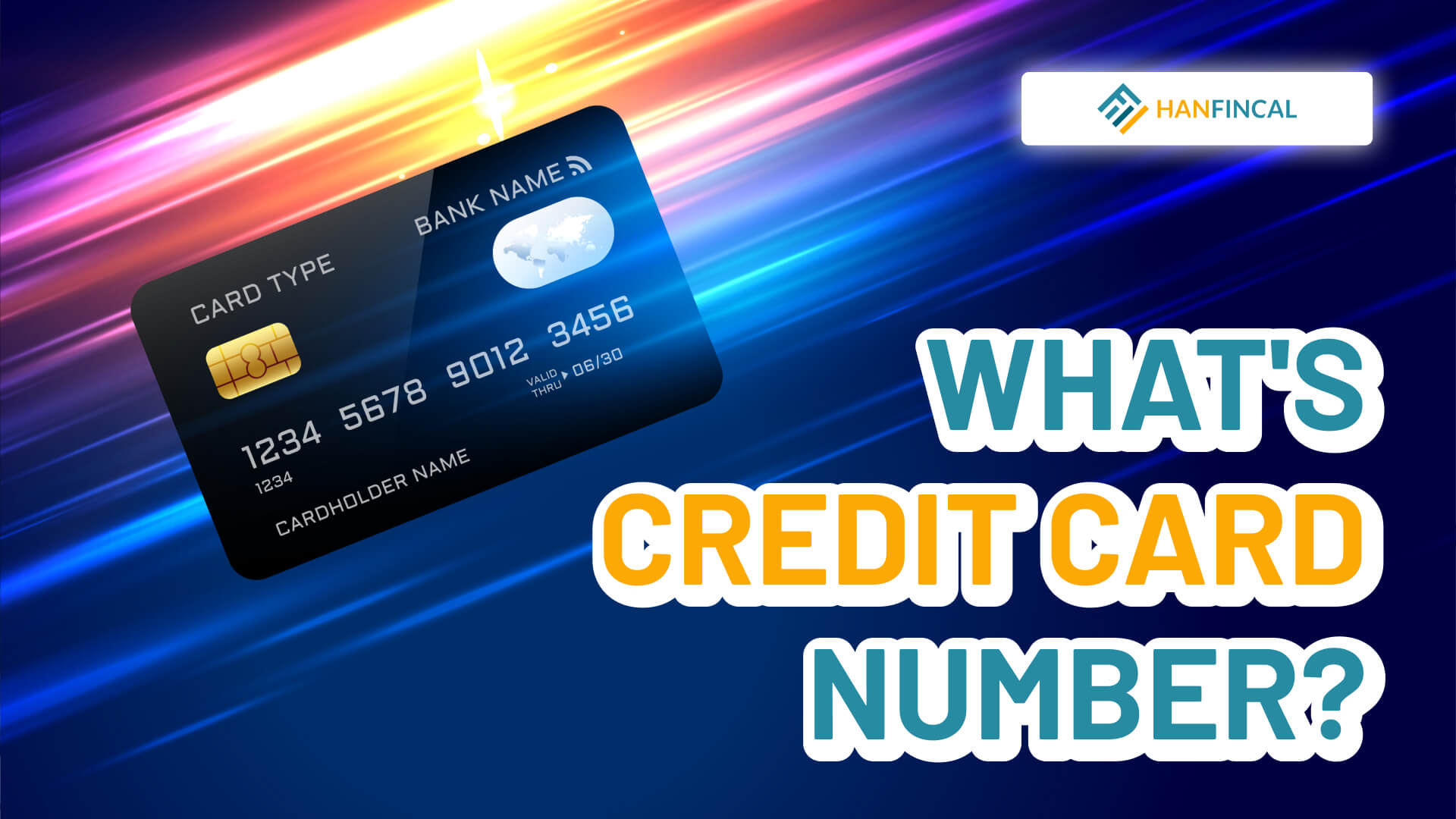Have you ever found the answer to this question: What is a credit card number? Whether you believe it or not, each of those digits is required to complete your transactions. They’re used to verify things like the cardholder’s and issuer’s identities. Hanfincal can assist you in delving deeper into it.
1. What is a credit card number?
A credit card number is typically the 15- or 16-digit number on the front or back of your credit card. It identifies the payment network, the bank that issued the card, and the cardholder.
Credit card numbers are not assigned at random; they are coded to identify the issuer, network, and account and validate the total number to prevent theft and fraud. Each of these credit card numbers has significance. Understanding the importance of each helps you spot fraud and gives you an inside look at how credit cards work.
2. Credit card numbers meaning

Credit card numbers meaning
2.1. The first number: industry identifier
The numbers on the credit card are not random; each one has its own meaning. Examine the first digit on a credit card. This digit indicates two things:
- The payment network and the industry with which the card is associated.
- The payment network is American Express if the first digit is a 3.
- Visas begin with four numbers.
- Mastercards with two or five digits at the beginning.
- Discover cards with six digits.
- Aside from the payment network, the first digit identifies the industry with which the card is associated. This digit represents the Major Industry Identifier (MII):
- 1 and 2: They are associated with air travel and financial services, respectively.
- 2-6: They are commonly used in everyday financial and banking situations.
- 7: It refers to the petroleum industry.
- 8: It is assigned to health care and telecommunications.
- 9: The government is free to use number nine, essentially the “other” category.
2.2. The next 5 numbers: issuer identification numbers
What do credit card numbers look like with the next five numbers? Check out the meaning of the following digits.
These are known as the card’s Issuer Identification Number (IIN) or Bank Identification Number (BIN). They indicate which credit card company issued the card and which card network it belongs to.
The numbers that identify the account holder are listed after identifying the issuer. Each issuer has one trillion numerical configurations to generate account numbers, and different credit cards employ slightly different numbering systems.
2.3. The next 9-12 numbers: account identifier
This is your personal account number. It can have up to 12 digits, the last three of which, along with the card number’s final digit, will appear on your monthly statements. When you get a replacement credit card because your original was lost or stolen, your account number will change, but you will not be opening a new account. As a result, your credit score will be unaffected.
2.4. The last number: checksum
A checksum is the last digit of a credit card number. It is a key that indicates whether or not a credit card is valid. A formula known as the Luhn Algorithm generates the “check number” or “key.”
Credit cards are designed to be used for immediate payment. As a result, banks’ validation processes must immediately encrypt and decrypt sensitive data. This is where The Luhn algorithm comes into play. Card numbers can be quickly verified, and their validity confirmed using it.
The Luhn algorithm is straightforward to use. When you add the check number to the other numbers on the card, the total should be 0. If you enter the wrong digit during an online purchase, it will be immediately detected because the sum will not be 0.
Knowing what a credit card number is can help you understand the importance of these numbers in protecting your card. Your credit card contains vital information, and while the process is complicated, it helps simplify your life and the way you make payments. As a result, don’t overlook any information on your credit card and keep it safe from being stolen for nefarious purposes.
==> Read More:




